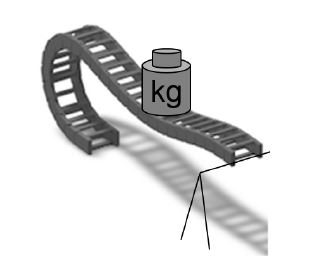How igus gets maximum service life from energy chains
jhang | 20. October 2020
Many manufacturers design their products in such a way that they give up the ghost early. Planned obsolescence is the name of this trickery. Why igus is pursuing a different strategy.
Quickly print out the spaghetti recipe for the culinary evening with friends. But then the cry to the heavens: the printer no longer turns on. That can’ t be true for a device that is two years old, can it? Yes, says a study commissioned by the Green Party in the Bundestag. Some manufacturers therefore use components that cause premature defects. Artificial wear and tear, also called planned obsolescence, costs consumers several billion euros a year. A sales trick that is not so new. As early as the late 1950s, for example, the US car industry – in times of high market saturation – designed car bodies, tyres and exhausts that were less and less durable.
A trick that lasts. “In recent decades, market saturation has increased sharply in most industrialised countries for very many products”, the authors of the study write. “Today, there is a tendency for overcapacity in many areas. These developments have greatly favoured the spread of planned wear in recent decades. “
Planned obsolescence is also a serious problem in B2B.
And the problem does not only affect consumers who are annoyed by striking toasters, dishwashers and smart phones. It is true that premature wear is far less common in industrial business. But there is growing evidence that planned obsolescence has also become a serious problem in the B2B sector. If a component fails well before its expected service life, there is a risk of plant downtime and high consequential costs for repair and loss of production.
We therefore put our energy into developing energy chains that are tough and long-lasting and help users to achieve maximum productivity.
How strong are energy chains? The largest test laboratory in the industry provides clarity
An example of longevity beyond the tricks of the trade are energy chains, which igus manufactures from plastic. Plastic? Doesn’t this material cry out for premature fatigue? Not at all, because the plastics from igus are tribo-optimised high-performance polymers for industry – tuned materials, so to speak, which exhibit minimal friction behaviour and low wear rates. This is demonstrated by tests in the in-house laboratory, where 4,100 experiments are carried out annually on energy chains and cables under real conditions.
An example from the laboratory is a test of load-bearing capacity with unsupported length. Here, the energy chains of the E4.48L series made of polymer were compared with a competitor’s product.
Technical data:
| igus E4.48L | Competitors | |
| Inner/outer height | 48mm/64mm | 40mm/62mm |
| Inner/outer width | 105mm/125mm | 67mm/76mm |
| Pitch | 67 mm | 76 mm |
| Weight per metre | 1.73kg | 2.08kg |
Load bearing capacity in the case of an unsupported length
Test setup:
The two chains are suspended unsupported over a distance of 1.8m with an additional weight of 5kg/m.
Result:

Result: in relation to the neutral line, the competitor’s chain sagged 6mm lower than the E4.48L.
More than liability for defects: igus guarantees functionality over a long period
Energy chains are not the only ones that have to endure stress tests. Other products whose durability plays a key role for industrial customers must also enter this 3,800m2 large test laboratory – such as cables, plain bearing technology and low-cost automation components. The CF298.05.04 chainflex data cable, for example, has withstood 54 million double strokes in a long-term test when inserted into an energy chain.
Calculate service life with online tools
Use the service life calculator to quickly and easily determine the expected service life online
Are you wondering how long an igus energy chain will last in your application? You will find out in a few seconds. Because all data from the test laboratory flows into the online service life calculator.

Calculate the service life of your energy supply system with the service life calculator for energy chains, or ask us to do it for you and receive a 36-month guarantee. Send a request.
